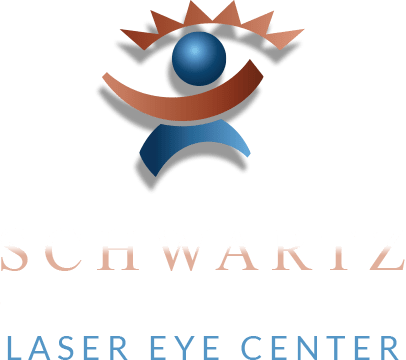Dry Eye: Causes and Treatments
Posted on July 14, 2020 by Schwartz Laser - Dry Eye

Whether it is insufficient tears or lack of quality in the tears’ mix, too little lubrication results in dry eye. Trusted Phoenix ophthalmologist Dr. Jay Schwartz explains what causes dry eye, and how to treat it.
Dry Eye
Tears consist of water, fats, and mucus. When these elements are out of balance, tears cannot nourish the eyes in the way they were designed. The result is often dry, irritated eyes. Dry eye is usually a chronic condition, and those suffering from it are more prone to eye infections.
Symptoms include:
- Burning or scratching sensation
- Feeling of something in the eye
- Light sensitivity
- Redness
Those with dry eye may also have difficulty driving at night due to vision problems.
Dry Eye Causes
Dry eye is most prevalent among those aged 50 and up. With aging, tear production lessens. Women are more likely to develop dry eye than men. Contact lens wearers are prone to dry eye issues. Certain medications may cause or exacerbate dry eye, including antidepressants, antihistamines and some blood pressure drugs.
Those exposed long-term to smoky or windy conditions are prone to developing dry eye. Contributing factors include significant periods at the computer or on a device and not blinking regularly.
Metabolic conditions such as diabetes or thyroid issues affect tear production and dry eye. If you suffer from eyelid inflammation, you are at higher risk.
Dry Eye Treatment
Lubrication is key to dry eye treatment. That may mean adding tears or conserving them. Those with mild dry eye can likely manage their discomfort with the use of preservative-free over-the-counter eye lubricants. However, if this method alone does not suffice, other types of treatment are necessary.
The ophthalmologist might prescribe tear producing eye drops. When tears are not of good nourishing quality for the eye, an omega-3 fatty acid supplement might boost tear substance.
Tear conservation keeps tears from leaving the eye as readily. Tiny gel plugs in the tear ducts aid in tear conservation, as does a minor procedure to block the ducts.
If eyelid inflammation is contributing to dry eye, prescription antibiotic eye drops can eradicate it.
At home, use humidifiers to improve moisture levels, and keep yourself well-hydrated. When outdoors, wear sunglasses. Remind yourself to blink regularly. Take steady breaks when working online for long periods.
Contact Schwartz Laser Eye Center
A thorough eye examination is needed to diagnose dry eye. To learn more about dry eye and treatment options, schedule a personal consultation with skilled ophthalmologist Dr. Jay Schwartz at his Phoenix, Glendale or Scottsdale office by calling or emailing Schwartz Laser Eye Center today. He will answer all of your questions regarding dry eyes and address any concerns.


